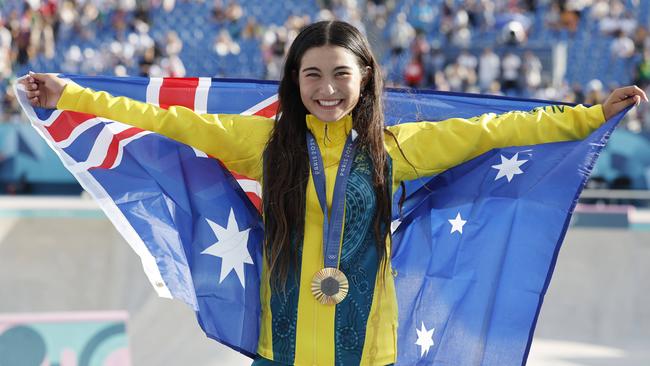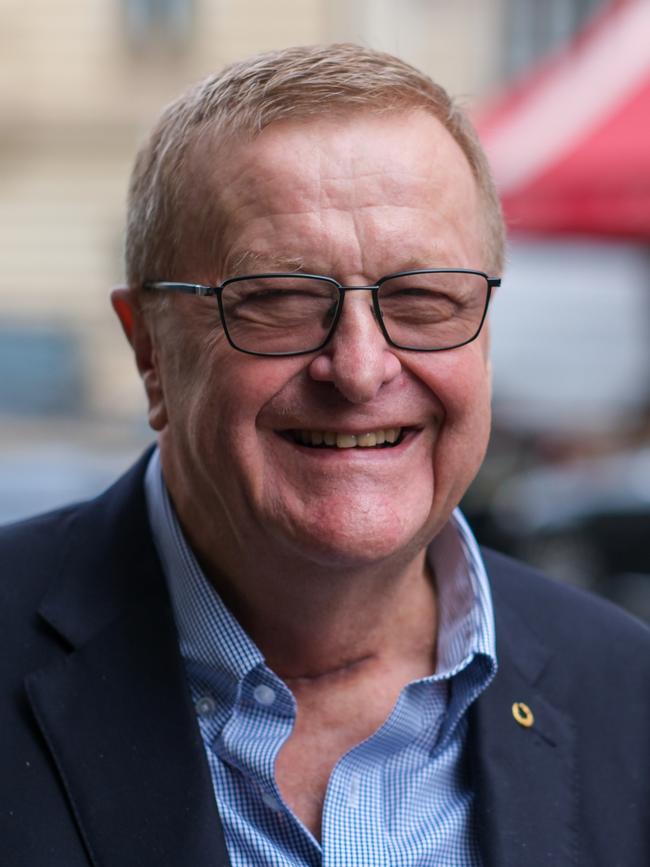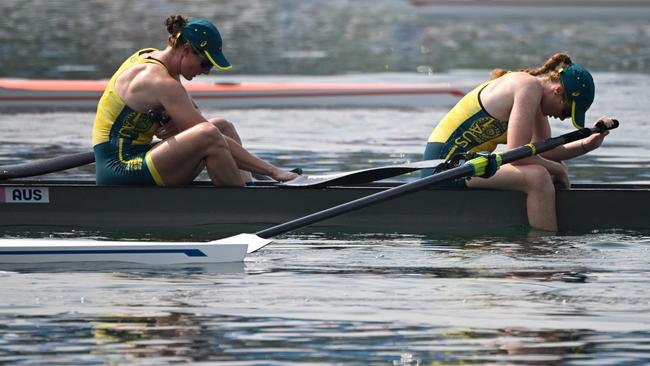Top three at the Olympics is where we want to stay, says John Coates
Olympic boss John Coates has called on the Australian team to aim for a top-three finish in Brisbane 2032.

Olympic boss John Coates has called on the Australian team to aim for a top-three finish in Brisbane 2032.
After Australia’s best-ever performance at an Olympics, sports should be aiming to keep rising up the medal table for our next home Games in eight years.
“If Russia is not there, we need to be targeting the top three,” Mr Coates said, noting the ban of a usual Olympic powerhouse over its invasion of Ukraine.
“Sydney (2000), we were top four in gold and top four in overall medals equal with China; but in those days Russia was second. Russia has gone. If Russia is not back in, I don’t think the Australian Olympic Committee will set a target but I think there ought to be a top three in medals and top three in gold.”
Where all that gold will come from is dependent on many factors – and one of them is money.
The other is the trailblazing sports where gold medallists are being developed in dusty, suburban skateparks and not necessarily on grass ovals or in the water.
If the new sports can continue the success they have had in Paris, then Mr Coates’s target may be achievable.
There have been gold medals in skateboarding, BMX racing and new disciplines in canoe slalom like the kayak cross where Noemie Fox triumphed. Then there were silver medals in surfing and bronze in BMX freestyle and the mixed marathon walk relay, an inaugural event in Paris. By contrast, some traditional sports bombed out. Rowing, the second-highest government-funded sport with $13m from taxpayers in 2023-24 ($10.6m for high-performance able-bodied athletes) took home only one bronze, and both hockey teams lost their quarter-finals, despite their sport being the seventh highest funded.
The extraordinary Olympic gold won by 14-year-old skateboarder Arisa Trew, our youngest ever medallist, was the one that really encapsulates the new era of Australian Olympic success.
Skateboarding received $1.69m in funding in the most recent 2024 financial year from the Australian Sports Commission ($1.39m for high-performance, leaving it fifth bottom among Olympic sports) compared with swimming’s $16.6m ($12.1m for high-performance able-bodied athletes).

Yet it’s a humble skate bowl in Elanora, on the Gold Coast that has been the birthplace of Australia’s Olympic triumph.
Keegan Palmer snared another Olympic gold – his second after winning in Tokyo – and shared a story about himself and his dad Chris lobbying the Gold Coast Council at the skate park to put in lights so they could train at night. Skating in the day was too hot. As he pointed out, it paid off, with the rise of fellow Elanora local, Trew. “That bowl is just breeding kids nowadays,” Palmer said. “Elanora is holding it down right now at the top of our skateboarding.”
Palmer expects the sport to “explode” after the two gold medals.
But Australia’s skateboarding rise is nothing new. Just ask American skater great Tony Hawk, who watched the Aussies dominate, alongside the likes of rapper Snoop Dogg and NBA king Devin Booker. Hawk wasn’t surprised.
“Oz has been a big supporter of skateboarding,” Hawk said on the sidelines of the event at Place de la Concorde.
“Even in what they call the dead years, the early 80s, early 90s it has always been legendary Australian skaters, so it’s no surprise.”

Who deserves more money and how that money will be spent will take place in the coming months. ASC chair Kate Jenkins and chief executive Kieran Perkins have been present at some of our biggest successes and a couple of disappointments. The pair were at the Matildas’ opening game in Marseille – the 2023 World Cup semi-finalists didn’t get out of their group in what was a brutal campaign – but also attended the swimming various functions at the Australian embassy.
At the Prime Minister’s fundraising dinner in Melbourne before the Games, Anthony Albanese and Sports Minister Anika Wells announced $283m in new funding for Olympic sports for two more years.
“I understand there is more (money) to set us on the way to LA and Brisbane,” said Mr Coates, a powerful figure usually in the know who the Prime Minister has called a personal friend.
An ASC announcement on the next funding breakdown will be made in October. Olympic sports already had a “minimum investment guarantee” from the government through to June 30, 2026, before Paris, with most sports reacting positively to what were generally increases across the board or at least at pre-Paris levels. It means that any funding cuts will not happen straight away.
For some Olympics programs, performance targets will be increased following Paris due to results or performances. More money will mean higher expectations. Will more money flowing to newly successful sports keep the gold medals flowing? It depends on what the rest of the world does.
“What tends to happen is that we are very good at being early adopters of these so-called new sports,” said Volleyball Australia president Craig Carracher.
“We’ve got a good high-performance system, the AIS, and if there’s good cultural alignment with our country then we do really well early. Then the other countries start to catch up and we tend to rely on the individual talents of the athletes who won early.”
In his sport, Mr Carracher gave the example of beach volleyball winning bronze in 1996 and then gold at Sydney 2000 before a sustained drought ended with silver in Tokyo three years ago.
“And so we have to be better at extending that early performance and bringing through the next generation of athletes coming through if we want to move up or at least stay where we are on the medal tally,” he said.
That means more lights at skateparks, and other facilities, but other than government funding the approach to getting more money into the Olympic sports – which live on the breadline at the best of times given most sponsorship dollars in Australia go to the big professional football codes and cricket – is piecemeal.
Mr Carracher is going to establish what he hopes will be a $20m fund to keep volleyball afloat.
One of the first things the Australian Olympic Committee will do after Paris is launch what it aims to be a $100m fund to raise money for Aboriginal and Torres Strait Islander athletes, and rowing and athletics are building their own philanthropic funds. Another idea for sports to get more money is to pool the Olympic sports’ commercial properties to sell to the market, rather than approach sponsors individually.
But potentially the biggest challenge is keeping the athletes in the system. Can a 14-year-old skateboarder or Olympic canoe gold medallist earn enough to stay in sport? For Trew, on the commercial skateboarding circuit with more than half a dozen sponsors and 169,000 Instagram followers, the teen is not in a precarious financial state, but for other athletes it’s difficult.
Businessman John Wylie, a former ASC chairman, donates money to dozens of athletes annually to help pay for university courses. “It can help set them up for success beyond their athletic performances, and we would love nothing more than for more venture capital investors to … invest in this too,” he said.
Beach volleyball gold medallist Natalie Cook plans to raise $1m annually for 100 athletes from businesses, while consultancy Bastion has launched project32 to connect athletes with the corporate sector to help not only build sponsorship but also post-sporting career opportunities.



To join the conversation, please log in. Don't have an account? Register
Join the conversation, you are commenting as Logout